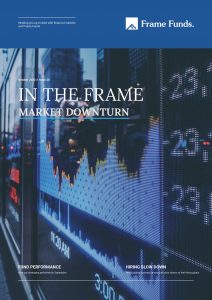Market downturns are painful to go through and are an unavoidable part of investing.
The way you handle periods when your investment portfolio is declining, can define the type of returns you generate over the upcoming decade.
There are obviously other considerations when deciding when to buy and sell, and how to respond during drawdowns, some of these may be leverage, time to retirement, time required before you may need to call on your investment, and the current risk profile of your investments, to name a few.
This article aims to provide a number of simple steps to undertake during market downturns to ensure you are not one of the investors who always sell the lows by capitulating right at the last moment before a market rebound.
As markets (and investment portfolios fall), most investors struggle to deal with the negative emotions associated with losing money. These emotions can cause investors to make rash, short-term decisions, as the immediate decision of selling (flight response) reduces the immediate pain. Unfortunately, these emotionally fuelled decisions can impact an investor’s prospects over the medium to long term.
Most investors know this, however, do not have a simple process to follow to help navigate these periods. Here are a few simple ideas.
1. Reduce the risk of ruin.
a. Ensure the companies you are investing in will survive (they have enough liquidity to last a sustained downturn).
2. Reduce your investment size in companies which contain the most investment risk.
3. Reduce the frequency of monitoring your portfolio.
a. Take a medium-term view.
b. During downturns, market volatility increases, therefore your portfolio could be up or down 10% in a week.
c. You don’t get your property valued week; therefore, why would you do the same thing with your equity portfolio?
4. Plan out additional investments to capitalise on lower valuations
a. After completing Steps 1 – 3, investors should then look to allocate further in a systematic way.
i. Monthly, Quarterly, Semi-annually,
Annually, or a predetermined technical indicator, such as when the index price is above the 200 daily moving average for instance.
5. Commitment to your investment plan for the next business cycle.
Investors must realise that during market downturns,the likelihood of you investing once and getting to the bottom is extremely low. It is far more likely, that after you have planned your additional investments, you will strategically invest further into favoured Funds/Companies and their prices may fall further.
However, as long as you have done your due diligence and have committed to your investment plan, over the medium term you should ultimately do far better.
For instance, if you had invested in the S&P500 at the start of 1987 (roughly 8 months before the ’87 crash), you would have generated an annualised return of 10.04%. Yes painful, and unenjoyable over the short term, however over the long term, by strategically investing into the best Funds and companies, you should come out much further ahead.
If you would like to discuss any of these points, please email me at hue@framefunds.com.au or call our office at 02 8668 4877.
Download the full report by clicking the image below.
